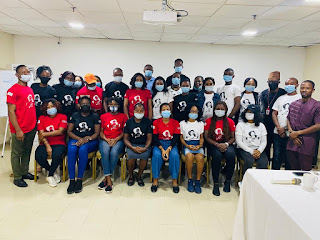REPORT ON CODE / UN SPORTLIGHT CAPACITY BUILDING FOR WOMEN AND GIRLS ADVOCATE IN CROSS RIVER STATE
Day one of the training had in attendance 25 participants (90% Female and 10% Male).
The training kicked off with an introduction / welcome remarks which helped to provide an overview on CODE’s activities and it also created a platform for the participants to get to understand the scope and expectation for the training.
The participants were engaged in a pre-evaluation process to evaluate their learning expectations from the training sessions after which they were taking through the project background by Busayo.
After the pre-evaluation process, Rukayah took the participants through the policy and legal framework that provides and protects women’s rights, after that was a brief session for Q&A from the participants.
After the tea break, the participants were educated on the similarities and differences between sex and gender and also definition of SGBV, forms of SGBV, the root cause and contributing factors and consequences of SGV. This session saw the participants engage in a practical breakout session to engage in exercises on SGBV after which each breakout group made a presentation of their group’s engagement.
Busayo took the participants through the last two sessions for the day, educating them on how to strengthen advocacy and policy influencing skills for effective engagement with policymakers in the state (Cross River) and also how to take advantage of social media and radio as a tool for effective advocacy.
Day two of the training started with guiding the participants through the basic components of budget analysis and gender-based budget analysis. Through this session, they were able to understand the processes involved in budget analysis as well as analyzing Cross River State budget document.
This led to a breakout session which engaged the participants on the extraction of gender-based components from the state budget and also developing a state action plan on SGBV. Each group made a presentation of their engagement after the breakout session as the session came to an end.
After the tea break, the participants were educated on the effective ways of engaging government for sustainable social impact and how to mobilize communities to respond to community issues. In this session, the participants were engaged on how to increase the capacity of a community, helping them identify and address their own needs as a community while generating local solutions to the problems of their community.
The participants were engaged in the post-evaluation while Busayo gave the closing remarks after which the group picture was taken signaling an end to the training.
The training ended with a closing remarks from Busayo.




Comments